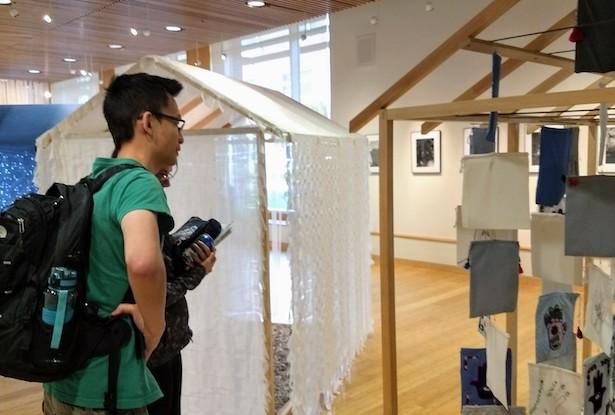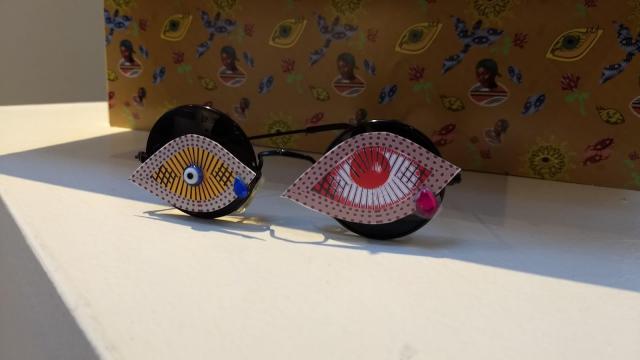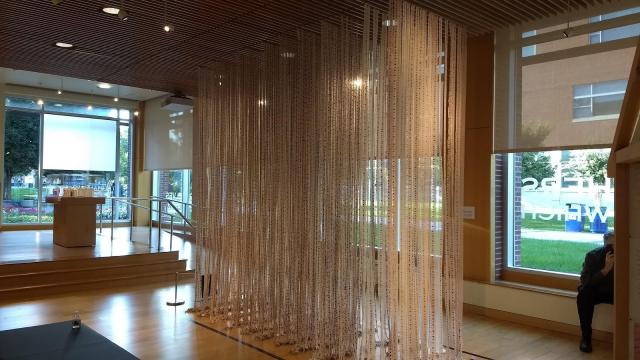Kean University Gallery Exhibitions Explore Refugees and War

In Kean University’s continuing efforts to promote human rights awareness to students and the larger Kean community, two Kean galleries are featuring exhibitions that explore refugees and war. Artist Leslie Nobler’s Patterns of Refuge is on display at the Nancy Dryfoos Gallery, and Linda Bond’s exhibition, After-Effects: Beyond the Shadow of War is featured at the Human Rights Institute Gallery. Each exhibition kicked off with an opening reception for the artist.
Patterns of Refuge blends multiple cultures in a fabric showcase. Nobler offers her interpretation of 19th century Dutch fabric wax prints, called “Ankara,” which themselves were copies of Indonesian textiles produced by Dutch colonists and sold to native West Africans. The patterns include Western and Central African visual symbols and themes.
Nobler has always had an interest in social justice art and is excited to have her works which explore colonization in Africa, strife and the Holocaust on display at Kean because of the University’s commitment to human rights awareness.
“There's a backstory to my artwork,” said Nobler. “There are beautiful outcomes from the art that come from the cultures interconnecting with one another through trade and history as a whole.”

At the Human Rights Institute Gallery is artwork by international artist and former Salvation Army General Linda Bond. After-Effects: Beyond the Shadow of War addresses issues of social concern and examines the details of violent events as they unfold, attempting to both humanize these tragedies and to combat the numbing effects of a media-saturated culture.
“We all have the potential to be monks, and we all have the potential to be terrorists,” Bond said. “What are the seeds within us that get nurtured, and how do we turn things more towards peace?”

Sara Compion, director of Kean’s Center for Interdisciplinary Studies, believes that the exhibit provides an uncommon perspective on war.
“Linda has multiple layers of conversation that happen through her art, one of which is gender,” Compion said. “When you think of war, you often hear a masculine voice, and her work is not only visually feminine, but purposefully tries to reflect the female voice.”
Through her art, Bond hopes to broaden our understanding of war and social justice issues.
“There’s a beauty, an elegance, a reminder of the dignity of humanity among the artworks here,” said Neil Tetkowski, director of University Galleries. “We do these shows with the intention to springboard inspiration, providing a platform for students and community members alike to try to improve the world and see other perspectives.”
Leslie Nobler’s Patterns of Refuge at the Nancy Dryfoos Gallery closes on Monday, October 30, while Linda Bond’s exhibition, After-Effects: Beyond the Shadow of War at the Human Rights Institute Gallery runs through Wednesday, December 20.
For more information on either exhibition, visit www.kean.edu/galleries, email galleries@kean.edu or call (908) 737-0392.